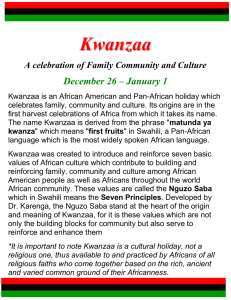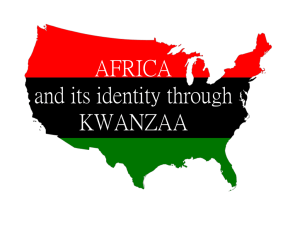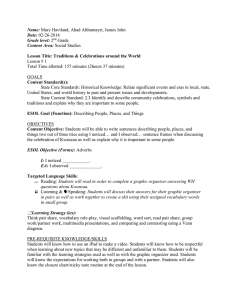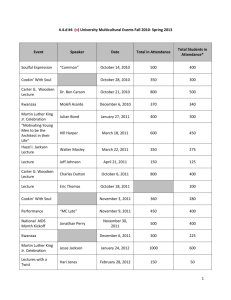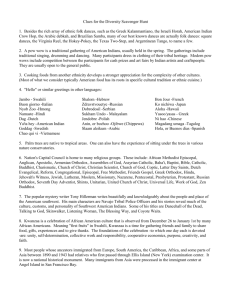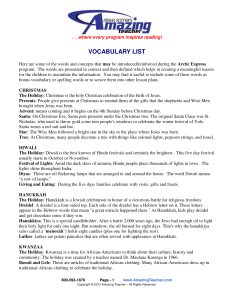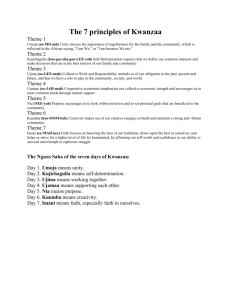Kwanzaa - WordPress.com
advertisement
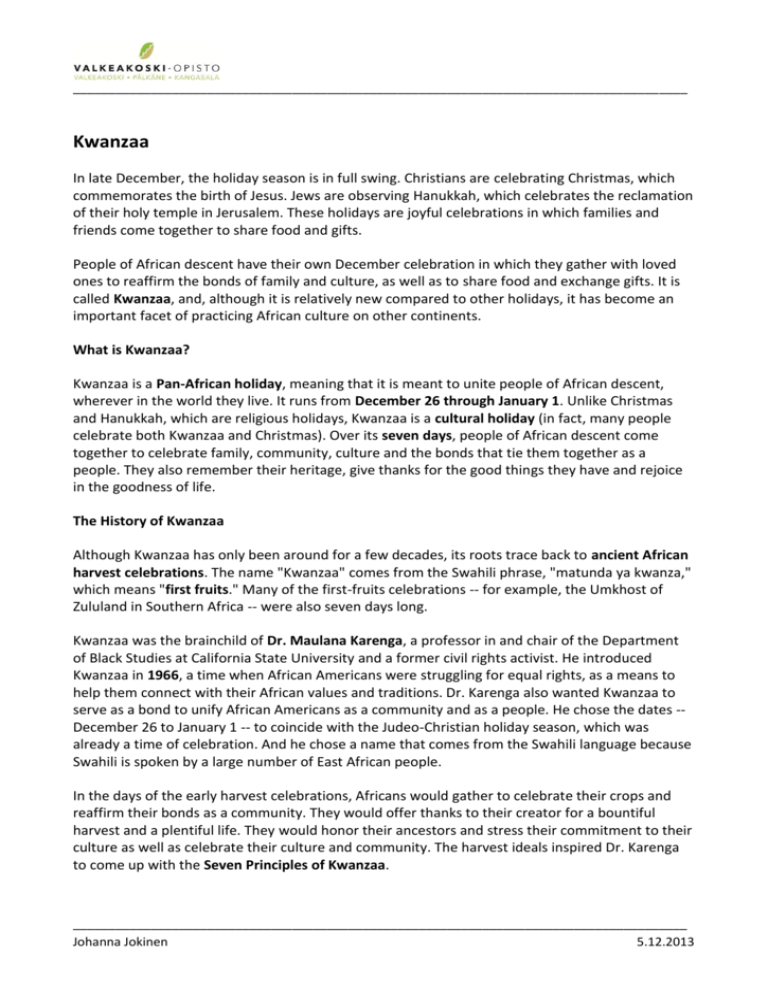
_______________________________________________________________________________________ Kwanzaa In late December, the holiday season is in full swing. Christians are celebrating Christmas, which commemorates the birth of Jesus. Jews are observing Hanukkah, which celebrates the reclamation of their holy temple in Jerusalem. These holidays are joyful celebrations in which families and friends come together to share food and gifts. People of African descent have their own December celebration in which they gather with loved ones to reaffirm the bonds of family and culture, as well as to share food and exchange gifts. It is called Kwanzaa, and, although it is relatively new compared to other holidays, it has become an important facet of practicing African culture on other continents. What is Kwanzaa? Kwanzaa is a Pan-African holiday, meaning that it is meant to unite people of African descent, wherever in the world they live. It runs from December 26 through January 1. Unlike Christmas and Hanukkah, which are religious holidays, Kwanzaa is a cultural holiday (in fact, many people celebrate both Kwanzaa and Christmas). Over its seven days, people of African descent come together to celebrate family, community, culture and the bonds that tie them together as a people. They also remember their heritage, give thanks for the good things they have and rejoice in the goodness of life. The History of Kwanzaa Although Kwanzaa has only been around for a few decades, its roots trace back to ancient African harvest celebrations. The name "Kwanzaa" comes from the Swahili phrase, "matunda ya kwanza," which means "first fruits." Many of the first-fruits celebrations -- for example, the Umkhost of Zululand in Southern Africa -- were also seven days long. Kwanzaa was the brainchild of Dr. Maulana Karenga, a professor in and chair of the Department of Black Studies at California State University and a former civil rights activist. He introduced Kwanzaa in 1966, a time when African Americans were struggling for equal rights, as a means to help them connect with their African values and traditions. Dr. Karenga also wanted Kwanzaa to serve as a bond to unify African Americans as a community and as a people. He chose the dates -December 26 to January 1 -- to coincide with the Judeo-Christian holiday season, which was already a time of celebration. And he chose a name that comes from the Swahili language because Swahili is spoken by a large number of East African people. In the days of the early harvest celebrations, Africans would gather to celebrate their crops and reaffirm their bonds as a community. They would offer thanks to their creator for a bountiful harvest and a plentiful life. They would honor their ancestors and stress their commitment to their culture as well as celebrate their culture and community. The harvest ideals inspired Dr. Karenga to come up with the Seven Principles of Kwanzaa. _______________________________________________________________________________________ Johanna Jokinen 5.12.2013 _______________________________________________________________________________________ Principles and symbols Seven is an important theme of Kwanzaa. The holiday lasts for seven days -- one day for each of its seven guiding principles. There are seven basic symbols used in the Kwanzaa ceremony -- one of which consists of seven candles -- and each symbol ties into one or more of the seven guiding principles. Each of the seven days of Kwanzaa is dedicated to one of the following principles, as follows: Umoja (Unity): To strive for and to maintain unity in the family, community, nation, and race. Kujichagulia (Self-Determination): To define ourselves, name ourselves, create for ourselves, and speak for ourselves. Ujima (Collective Work and Responsibility): To build and maintain our community together and make our brothers' and sisters' problems our problems, and to solve them together. Ujamaa (Cooperative Economics): To build and maintain our own stores, shops, and other businesses and to profit from them together. Nia (Purpose): To make our collective vocation the building and developing of our community in order to restore our people to their traditional greatness. Kuumba (Creativity): To do always as much as we can, in the way we can, in order to leave our community more beautiful and beneficial than we inherited it. Imani (Faith): To believe with all our hearts in our people, our parents, our teachers, our leaders, and the righteousness and victory of our struggle. Kwanzaa symbols include a decorative mat (Mkeka) on which other symbols are placed, corn (Muhindi) and other crops, a candle holder kinara with seven candles (Mishumaa Saba), a communal cup for pouring libation (Kikimbe cha Umoja), gifts (Zawadi), a poster of the seven principles, and a black, red, and green flag with supplemental symbols. The symbols were designed to convey the seven principles _______________________________________________________________________________________ Johanna Jokinen 5.12.2013
